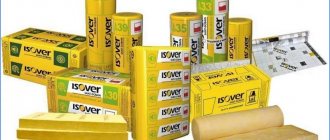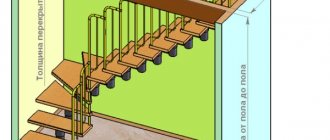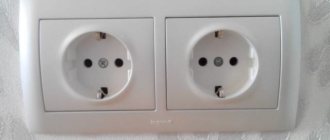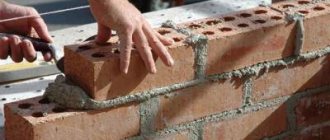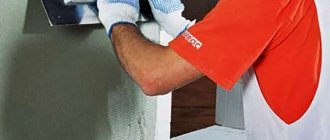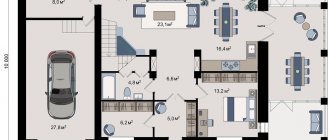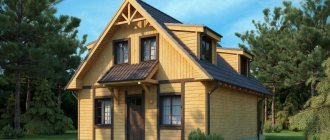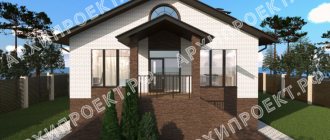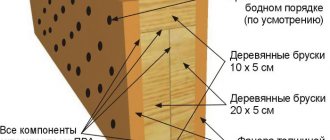Among other types of building materials used in the construction of the frame of a private house, foam concrete blocks are distinguished by their low cost, low thermal conductivity and low weight. Due to the extreme simplicity of the manufacturing technology, they can be made directly on the site in the utility room.
However, to build your own personal cottage, it is better to purchase foam blocks in a factory-made version with standard sizes and the brand required for a particular case. It is recommended to take some foam concrete products for external walls, and others for internal partitions.
How many degrees can aerated concrete withstand?
Thus, answering the question of what temperature aerated concrete can withstand, we can safely say that the cellular material can withstand temperatures up to +900 ℃. If the fire temperature was below +700 ℃, then the gas blocks can be reused.
Interesting materials:
How to answer the question why do you want to change jobs? How to restart iPhone 6 if the home button does not work? How to restart a laptop if the keyboard does not work? How to restart Samsung if the power button does not work? How to reboot an Android phone if the button does not work? How to restart the phone if the Android screen does not work? How to restart a Samsung phone if the sensor does not work? How do you say homework in Russian? How to overcome laziness at work? How to raise the window if the motor does not work?
What is a foam concrete block?
Foam block is a porous building material made from a mixture of cement, water with sand and a foaming agent. This is one of the varieties of cellular concrete (foam concrete). But unlike aerated concrete, which is similar in structure, voids in it are formed not due to chemical reactions inside the block during the hardening process, but due to the mixing of the concrete mixture with pre-prepared foam.
The foaming agent used is organic or synthetic. The first protein-based option is more expensive, but the block with it is more durable and environmentally friendly. Synthetics are cheap, but have a 4th hazard class. The foam blocks themselves are safe, but you have to be more careful when mixing the solution when working with the original mixture.
Forms for pouring foam concrete mixture
This material for building houses is produced in two ways:
- By cutting a monolith of hardened foam concrete into “bricks” of the required size;
- Filling forms with the required dimensions in width, height and length.
The process of sawing an array of hardened foam concrete into blocks
To save on raw materials and increase the density of the blocks, ash, clay and other bulk fine-grained materials are often added to the mixture when mixing. On the one hand, this allows a significant reduction in cement consumption, and on the other hand, it leads to thickening of the interpore walls inside the foam block, making the product more durable. Moreover, the size of internal voids in this case decreases, increasing the thermal conductivity of the material.
Appearance
Types and sizes of foam blocks
One of the main characteristics of a foam concrete block in its marking is indicated by the letter “B” and a number from 0.5 to 60. This is an indicator of strength, i.e. load in kg/cm2 that a given foam block is able to withstand during compression. The higher this index, the more weight the building material in question can support without destroying its integrity. If a two-story house is being built, then it is best to take blocks with the highest possible strength for the first floor, and lower ones for the second.
The first parameter is directly related to the brand of foam concrete “M” in the same marking. The figure in its designation is calculated using the formula “strength value B” * 10/0.7, rounded to the nearest whole number. The second criterion in the classification is their average density (MPa), which is expressed in the product name by the letter “D” and a value from 300 to 1200.
Based on density and purpose, they are divided into three groups:
- Thermal insulation - D300 (B0.35 or B0.75), D400 (B0.75; B1 or B2) and D500 (B1.5; B2; B2.5 or B3.5).
- Structural and thermal insulation – D600 (B2; B2.5; B3.5 or B5), D700 (B2; B2.5; B3.5 or B5), D800 (B2.5, B3.5, B5 or B7.5) and D900 (B2.5; B3.5; B5 or B7.5).
- Structural – D1000 (B5 or B7.5), D1100 (B7.5 or B10) and D1200 (B10 or B12.5).
The frost resistance of foam blocks is designated from F15 to F75. Products marked F15–F25 are intended for the construction of internal partitions of a house, and from F25 and above are already recommended for the construction of external walls.
Depending on the average density and size, foam concrete blocks are divided into 10 types with markings from I to X. For example, a type “I” foam block has the following dimensions: height 188 mm, width 300 mm and length 588 mm. In terms of density, it can be made with the grade D500, D600 or D700. For a block of type “V”, GOST establishes dimensions of 288x250x288 mm and any class D from 300 to 1200. And the foam concrete product “X” has overall dimensions of 88x200x398 mm and a density of only D1200.
Foam block sizes
Foam block size table
| Dimensions, mm | Pieces per 1 cubic meter | Quantity on pallet | Quantity in masonry per 1 sq. m |
| 600x300x100 | 55 | 80 | 16,7 |
| 600x300x120 | 46 | 64 | 13,8 |
| 600x300x150 | 37 | 48 | 11,2 |
| 600x300x200 | 27 | 40 | 8,4 |
| 600x300x250 | 22 | 32 | 6,7 |
Pros and cons of houses made of foam concrete blocks
The advantages are as follows:
- The sizes of foam blocks standardized by GOST - simplifies the calculations of estimates and the work of masons;
- Cheap - foam concrete is one of the most cost-effective materials for building a house outside the city;
- Ease of processing - an ordinary hacksaw is enough to cut to the desired size;
- Durability - from them you can build a reliable and durable cottage three floors high, without using a reinforced concrete reinforcing frame;
- Light in weight – even the largest blocks can be worked alone without the use of special equipment;
- Excellent thermal insulation performance - houses made of foam blocks are considered one of the warmest; they outright outperform solid ceramic bricks in terms of heat transfer.
Foam concrete blocks are environmentally friendly and fire-resistant materials. The walls of houses made from them naturally “breathe,” which greatly simplifies maintaining a comfortable microclimate in the home. Here only log houses can compete with such cottages. However, in terms of fire resistance, wood is definitely not a competitor to foamed concrete.
Foam blocks also have disadvantages, but there are only two of them:
- High level of moisture absorption;
- Limited choice of type of foundation for the house (it must be strip or with a reliable grillage).
The main disadvantage of foam concrete is its predisposition to absorb moisture. There is no way to leave masonry without a protective finish. This applies to both interior decor and exterior façade.
Carefully check the quality of foam blocks: low-quality material may crack
When comparing the pros and cons of this building material, do not forget about the foundation underneath it. For houses made of foam blocks, the foundation will have to be made reliable and expensive. These concrete “bricks” themselves are quite light. However, the masonry of them must lie on a flat monolithic support so that, due to the movement of the soil at one of the corners of the structure, it does not crack from below to the roof.
Production technology
If you are interested in the question, what are foam blocks, you need to study the intricacies of production. So, first the solution is prepared, using standard proportions for mixing classic concrete. Then the resulting mass is placed in a special mixing container. In addition to water, cement and sand, the foam block contains foaming additives. They are introduced into the mixture when it is placed in the mixing container. A foam generator is used for this.
Additives are a foaming substance in an aqueous solution. If organic components are used, the finished material will be of higher quality. This is due to the significant thickness of the walls between the pores. When foam blocks contain synthetic materials, strength decreases. It is not recommended to use such material for the walls of a residential building.
The process of mixing components occurs under pressure. After this, a monolithic slab is formed, which will then be cut into bricks. Another method is also common, in which forms are filled with foam concrete; the density in both cases is the same.
Having figured out what foam blocks are made of, you need to learn more about drying technology. Excess moisture evaporates from the material naturally. Due to this, the uniformity of the fine-cell structure is reduced. The manufacturing technology is quite simple; in addition, much less cement is used. However, its amount cannot be further reduced. In this case, the pores combine with each other, forming channels, which will lead to an increase in the intensity of moisture absorption by the blocks.
The density of foam concrete decreases, and at the same time its strength decreases. As a result, foam blocks, which contain little cement and quite a lot of foaming agents, will serve for a short period, because they quickly collapse.
How to understand the markings
Foam block density
The main indicator of a foam block is its density. In the marking it is designated by the Latin “D” and the subsequent index from 100 to 1200. The higher the number, the denser the blocks will be. Hence the areas of their application.
- Foam blocks of the D100-D300 brand are usually used for the construction of partitions between rooms where lateral loads will be minimal.
- Representatives of the D400-D500 brands are the optimal choice for load-bearing walls of one-story buildings.
- D600-D900 - such blocks can be used in the construction of external and internal walls of one or two-story buildings. The technical characteristics of these blocks allow the construction of walls even without additional thermal insulation.
- The densest and therefore most durable blocks are the D1000-D1200 brands. With their help, you can build external and internal walls of buildings of three floors.
The second important factor determining the use of foam blocks in construction is its frost resistance. In the accompanying documents, this indicator is marked “F” with indices from 15 to 75.
The higher the index, the greater the resistance to low temperatures that foam blocks must demonstrate. Thus, for the construction of external walls, those whose index exceeds 25 are used. This is true for areas with warm winters and 45 for northern and other areas with a distinct continental climate.
Important
: Blocks whose frost resistance index is less than 25 are recommended to be used exclusively for walls inside heated buildings.
Conclusion
As you can see, there are not so many factors influencing what the thickness of a cinder block wall will be and the determination of this parameter. These are mainly weather conditions and, of course, the presence of a second floor or attic space.
In any case, you need to adapt exactly to what you have, while focusing on your financial capabilities. Trying to guess the thickness of the load-bearing walls, decide on it in advance if you are using a strip foundation as a base.
In the video presented in this article you will find additional information on this topic.
Crack repair
Since foam concrete is a relatively weak building material, it is often necessary to seal cracks on such walls. Before starting to repair the walls, the cause of the cracks is determined.
Possible cracks in foam concrete walls that appear during the operation of the house and methods of elimination:
Small shrinkage cracks .
They clean the plaster and dust, prime it, joint it with a metal spatula to the required width and length, and seal the seam with a water mixture of foam concrete crumbs and cement.- Large mechanical breaks are reinforced, and the seams themselves are sealed with adhesive for laying, blocks, construction foam or epoxy glue.
You can find more information about repairing cracks in foam concrete walls here.
Approximate construction time
Construction time largely depends on construction technology, construction period, type of masonry and modification of blocks.
The shrinkage time and final drying of masonry joints also depend on these parameters. If the process of building a foam block house is taken responsibly, it can be erected in a period of 4 to 6 months , including in stages:
- Preparation of the construction site, installation of utility networks and construction of the foundation, 1 month.
- Laying walls of 2 floors with overlap, 1 month.
- Finishing work on the facade and construction of partitions, 21 days.
- Roof insulation, 3 days.
- Finishing the house, installing thermal protection systems, installing utility networks in the house, installing windows and doors, 1 month.
Features of working with foam concrete
In addition to all of the above, you should understand several important points regarding foam blocks themselves:
- Calculation of wall thickness should be carried out according to the rules if you are confident in the quality of the building material. Do not forget that density is the main criterion by which a product is selected.
- For foam blocks, it is better to use special adhesive solutions rather than a regular cement-sand mixture. If you are not sure that you can maintain the correct proportions, it is better to purchase ready-made products that can be used immediately after opening the package.
- I would also like to clarify that foam concrete does not have increased resistance to water, so it is necessary to use additional hydrophobic materials . A small investment in protecting your walls will extend their service life by several years.
- For interior partitions, it is enough to use foam blocks 200 mm thick, and some house builders even build internal walls 100 mm thick. In fact, this is enough, but do not forget that the thinner the material, the lower the sound insulation. Therefore, soundproofing films are usually installed with such partitions.
Construction process - building walls
And now, as promised, instructions for the construction of external walls, taking into account all the factors affecting the material:
- First, you need to prepare the foundation for work: clean it from dust and dirt, level it if there are unevennesses.
- Afterwards, calculate the required amount of materials: foam blocks and adhesive solution. To make it easier for you to navigate, there are about 30 blocks in one cubic meter measuring 200x300x600 mm (we chose them so that the wall thickness was 300 mm). The glue calculation can be taken as an approximate amount - about 30 kg per 1 m3 of wall, so the main thing is to find out the total area of the walls being built.
Note! It is better to decide on the amount of materials at the design stage in order to avoid unnecessary costs and take into account all aspects, right down to window openings and internal partitions.
- When all the materials and tools are in place, you can begin to prepare the solution, unless, of course, you bought a ready-made mixture.
- Initially, the glue is applied to the surface of the foam block, which is placed on the foundation or floor slab.
- Before the adjacent block is laid, the end is thoroughly coated with glue so that there are no empty gaps between the products.
- To remove excess glue from under the foam concrete, tap it with a mallet.
- The second row is laid out with the materials shifted so that the vertical joints do not coincide; to do this, you need to cut one block in half and start laying from half.
Since foam concrete products are easy to process, you should not have any problems with making holes for window and door openings.
Now all that remains is to finish and insulate the façade of the foam block house:
- To finish with brick, several rods of thin reinforcement should be fixed in the foam concrete wall, between the blocks, this is necessary in order to connect the inner wall with the brickwork. However, first you need to install polystyrene foam boards using disc nails.
- If you use only plaster, then initially, on top of the finished wall, you should fix the reinforcing mesh. Then you need to apply a thick layer of heat-insulating plaster so that it hides the mesh underneath. The finishing layer is a decorative finish that protects the inner layer from ultraviolet radiation and moisture.
Scope of application
In the West, foam concrete has been actively used for several decades, but in our country it appeared relatively recently, but has already acquired an excellent reputation as a worthy alternative to classic building materials. The only significant drawback can be considered lower strength, therefore, in multi-story construction, concrete and brick remain uncompetitive.
It is recommended to use foam concrete when building a house no higher than two floors. The use of a combination of “concrete frame + foam blocks” makes it possible to erect buildings more than two floors high, but this option is rare. The main area of use of foam concrete is low-rise construction: houses, garages, utility rooms, commercial and industrial buildings.
And now more about the shortcomings.
Wall thickness is a trick question
In your search for what thickness to choose for a wall made of foam blocks, you may come across many different arguments and judgments, most of which will turn out to be unreliable information.
To protect yourself and find the right solution, we will describe several features that you should consider:
- Firstly , it is important to understand how low the temperature drops in winter. In areas where winters are very harsh, thicker walls with additional thermal insulation are certainly required.
- Secondly , decide on the insulation - whether you will install it or make do with ordinary plaster. For example, for houses where the thickness of the foam block wall is 300 mm, it is better to add thermal insulation material 50-100 mm thick.
- Thirdly , the insulation not only acts as a material that retains heat, but it also prevents the impact of ultraviolet rays on the foam block.
For your information! The choice of foam concrete products should also be influenced by their density, which varies; the higher the density, the more expensive the material.
Design resistance of masonry
The design resistance of masonry is a value determined by building standards, which includes various factors that reduce the strength of the structure - the wall. That is, a safety margin is created according to SNiP.
The design resistance of aerated concrete masonry with strength class B 2.5 is 1.0 MPa, that is, 10 kg/cm2. As you can see, this value is 2.5 times less than the strength of aerated concrete itself. That is, a linear meter of masonry can withstand a load of 30 tons.
Reinforcement
Reinforcement eliminates the risk of cracks and structural failure under high loads. All openings must be reinforced. The fittings must extend at least 50 cm beyond the dimensions of the opening.
It is imperative to install a reinforcing belt under the rafter system, since the load will be increased in this place. It is advisable to lay reinforcement after every 4th or 5th row of blocks. Reinforcement of the first row is required.
The recommended diameter of the reinforcement is 8-10 mm. The thicker the walls, the more reinforcement you need to use in rows. It is necessary to use at least 2 reinforcement rods in a row.
To lay the reinforcement in the blocks, grooves are made. The rods are installed using cement-sand mortar. First, you need to pour the solution into the groove, and then install the rod. The top of the groove must be completely filled with solution.
